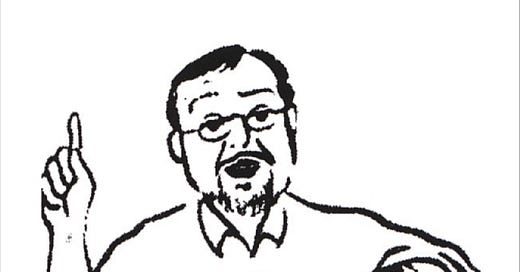Your lips are clenched like a sphincter. Or a fist.
You’re driving alone in your car when suddenly it picks up speed. You’re starting to go terrifyingly fast, some invisible demon pressing the accelerator. Nothing you do stops the car. Nothing even slows it down.
Remarkably, you make it out of the vehicle. To your horror, you discover nothing has changed. The entire world is still accelerating, seemingly stuck on fast-forward. It dawns on you it wasn’t the car’s fault. Rather, it was the entire planet’s fault. Or your fault.
You make it to the doctor. He says you’re talking too slow. You’re walking too slow, too, like a slow loris walking on a floor waxed with molasses. He asks you to count off 60 seconds. It takes you 280 seconds to accomplish the task.
This might sound like a jagged plot line from an episode of Black Mirror, but this isn’t fiction. It’s an actual case experienced by a patient the research world calls BW.
What in the world is going on with BW? And why am I bringing this up?
The answer to the first question is murky, but the answer to the second is straightforward.
We’ve spent the last two entries discussing sensation, mostly arguing about how many senses humans have. With BW, we’re about to switch gears. The concept of perception is next on the schedule, as different from sensation as a serial sitcom is from a horror anthology show.
BW illustrates the difference nicely. He gathered sensations effortlessly, feeling the steering wheel with his hands, hearing the doctor’s voice with his ears. But BW’s problem wasn’t in what he saw and heard, it was how he perceived what he saw and heard. The earth was moving too fast for him. Something was wrong with his perceptions. Astonishingly, BW seemed to know this. Slowing his talking and walking may have been his brains’ compensatory attempts to put a spike strip on his hyper-driven universe.
So what do we know about perception? How can we use that information to explain BW?
LEAVING THE WORLD OF SENSATION
Extero/interoception involves understanding sensory origins. Once those sensations enter the brain, new processes take over. Invoking something termed the classical model, researchers divide these processes into two broad categories: “bottom-up” and “top-down” processing. Some researchers believe this classical model needs updating, a fact about which I will have a great deal to say later.
“Bottom up” perception involves analyzing specific parts of a sensation with the goal of incorporating them into a sensible, perceptual whole. “Top down” perception is the process of that incorporation. You could swap the term “top-down” with the word “interpretation” and have a fair understanding of the difference. The mixture of the two allows your brain to become aware of something, to perceive its existence.
When bottom-up/top-down processing messes up, strange things can occur. That’s what happened to BW. His physicians eventually diagnosed a tumor growing in his frontal cortex (behind his forehead), a region known to be involved in time perception. When top-down processing malfunctions, it can make you think you’re trapped in a Twilight Zone episode, driving through the middle ground between shadow and substance.
REFERENCES
The case of BW
Fox, D. "Timewarp: How Your Brain Creates the Fourth Dimension." Newscientist https://www.newscientist.com/article/mg20427311-300-timewarp-how-your-brain-creates-the-fourth-dimension/ (2009).
Bottom-up and top-down processing
Kintsch, W. An Overview of Top-Down and Bottom-Up Effects in Comprehension: The CI Perspective Discourse Processes 2005, 39:2-3, 125-128
Passer, M.W, and R.E. Smith. Psychology: The Science of Mind and Behavior (4th Edition). New York: McGraw-Hill 2007. pp. G-3, G-13




